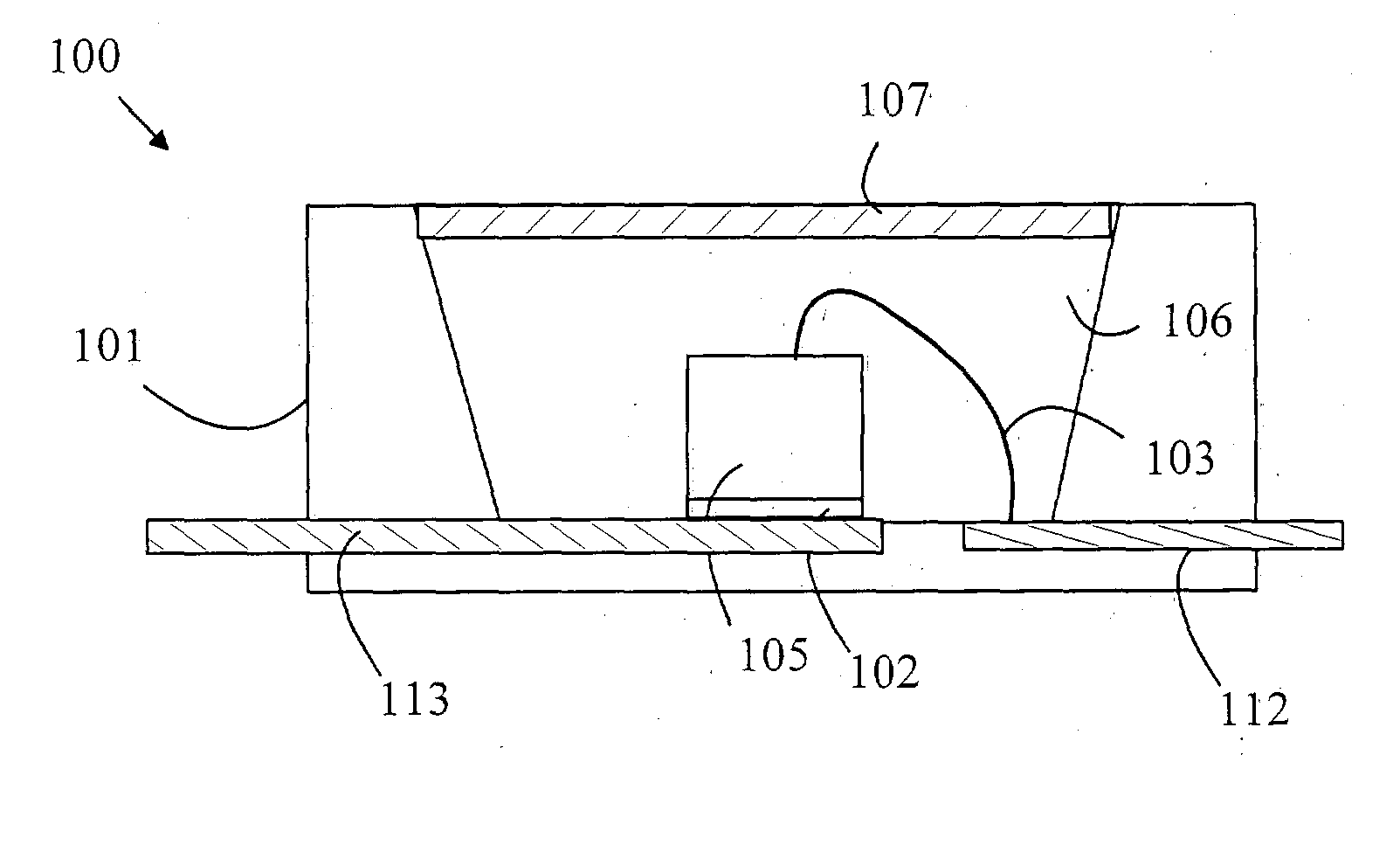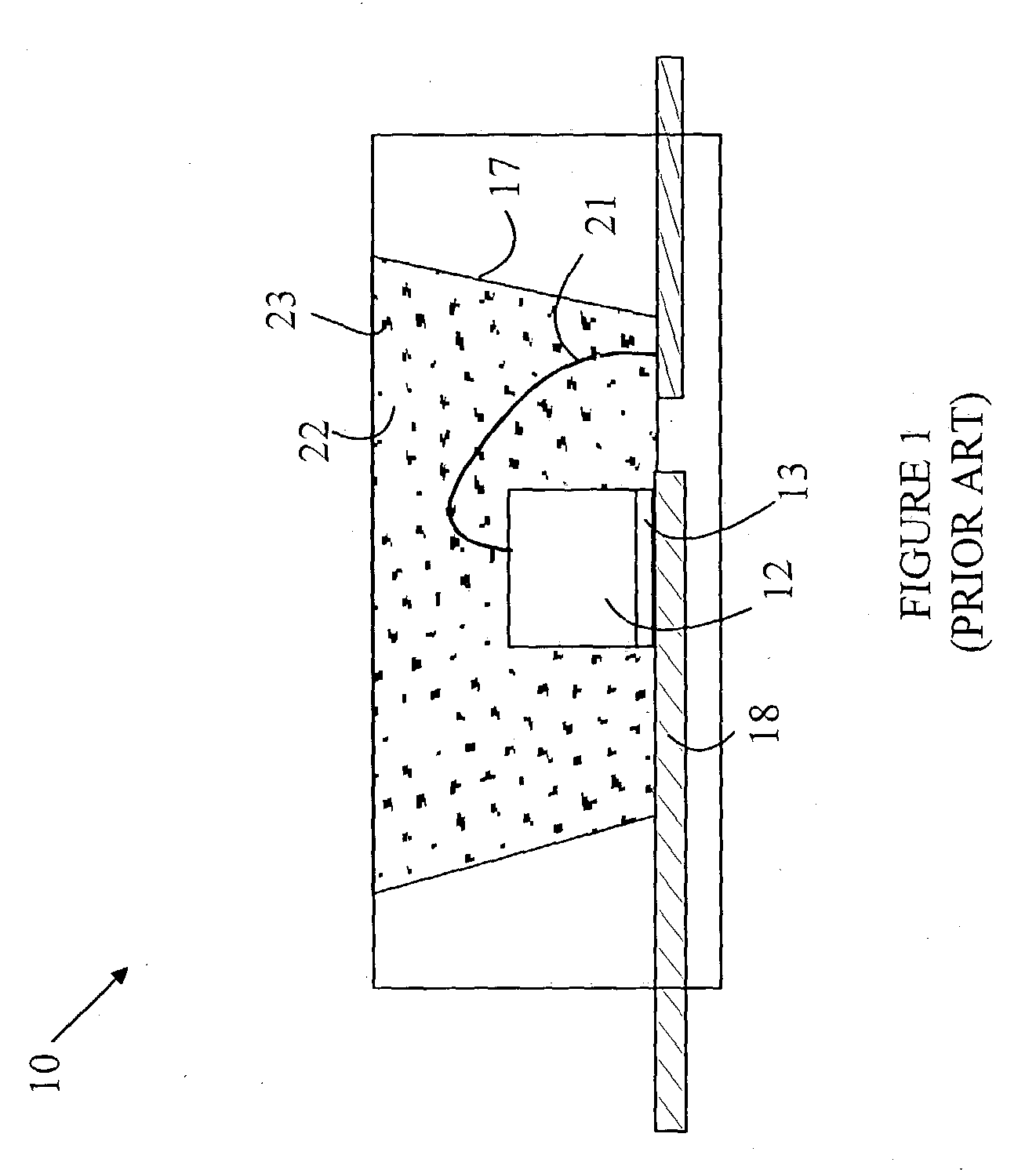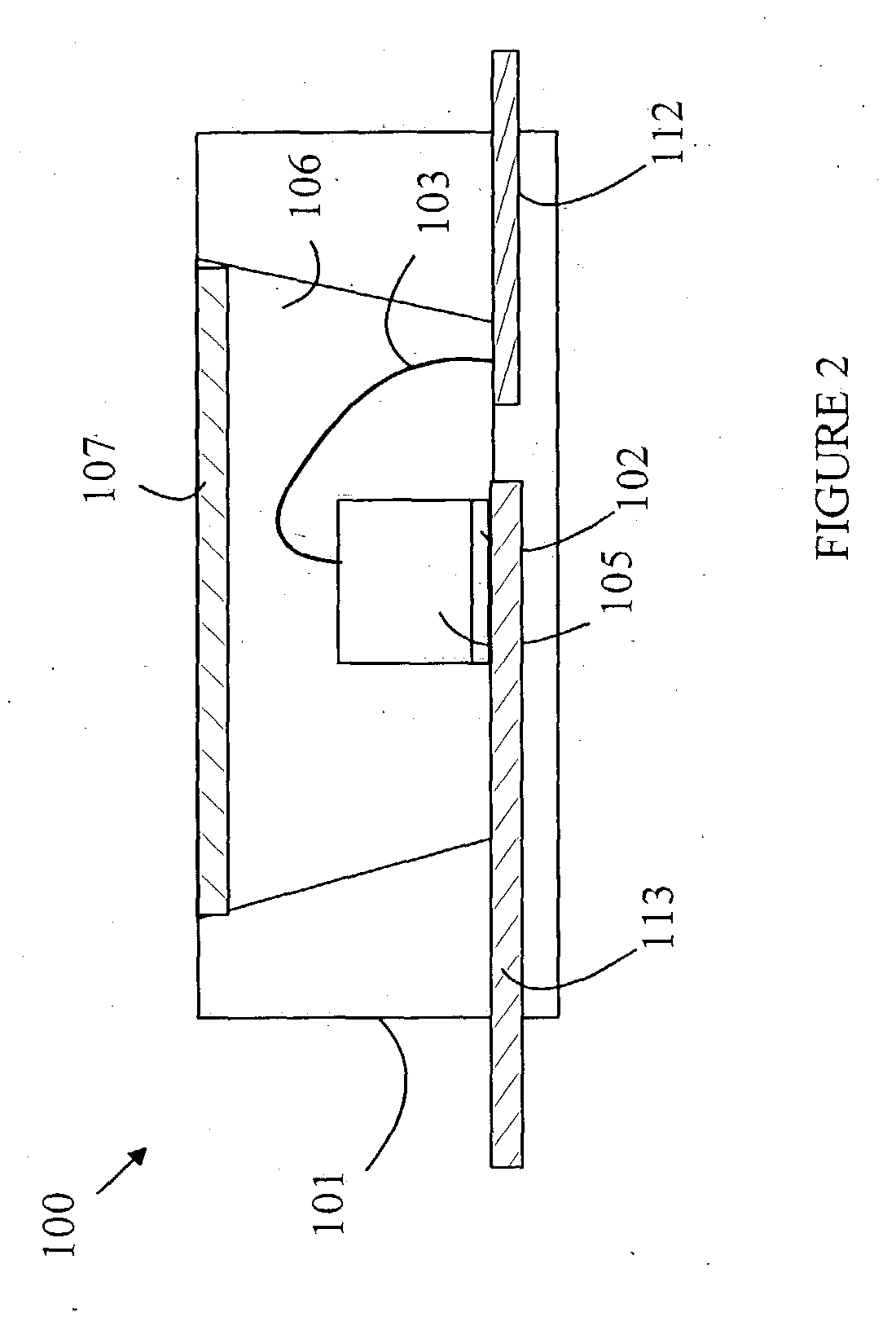Light emitting diode utilizing a discrete wavelength-converting layer for color conversion
a light-emitting diode and color conversion technology, applied in the field of leds, can solve the problems of difficult deposition of a layer of uniform thickness, difficult to guarantee color uniformity, and light in a relatively narrow spectral band
- Summary
- Abstract
- Description
- Claims
- Application Information
AI Technical Summary
Problems solved by technology
Method used
Image
Examples
Embodiment Construction
[0009] The manner in which the present invention provides its advantages can be more easily understood with reference to FIG. 1, which is cross-sectional view of a prior art white-light emitting LED 10. Light source 10 includes a reflecting cup 17 constructed in a well in a printed circuit board base. Semiconductor chip 12 having a primary light source is mounted on a conductor 18 on the bottom of cup 17 with the aid of an adhesive layer 13. The chip is electrically connected to an off-chip power source via contact 21 and conductor 18 to the bottom of the chip. Cup 17 is filled with a casting epoxy 22 in which the phosphor particles 23 are suspended.
[0010] If the primary light source on semiconductor chip 12 is a blue-emitting LED or laser diode, then the phosphor particles are chosen to convert blue light to yellow light. For example, an LED that emits blue radiation, typically at about 480 nm, is used to excite a YAG:Ce phosphor which then re-emits a broad-band yellowish radiatio...
PUM
 Login to View More
Login to View More Abstract
Description
Claims
Application Information
 Login to View More
Login to View More - R&D
- Intellectual Property
- Life Sciences
- Materials
- Tech Scout
- Unparalleled Data Quality
- Higher Quality Content
- 60% Fewer Hallucinations
Browse by: Latest US Patents, China's latest patents, Technical Efficacy Thesaurus, Application Domain, Technology Topic, Popular Technical Reports.
© 2025 PatSnap. All rights reserved.Legal|Privacy policy|Modern Slavery Act Transparency Statement|Sitemap|About US| Contact US: help@patsnap.com



